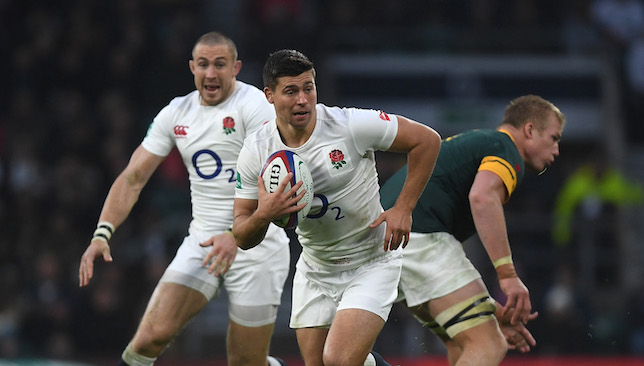
The gap between Northern Hemisphere and Southern Hemisphere rugby nations has closed significantly compared to 12 months ago, but a gap remains nonetheless.
New Zealand’s defeat to Ireland showed the All Blacks to be mortal but let’s see how they fare in Dublin this weekend before making judgements about a changing of the guard.
Australia are clearly undergoing a period of transition – their 0-3 drubbing at the hands of England in June a worrying sight – but they are still clearly one of the top three sides in the world. Although they looked lacklustre on Saturday against Scotland, their comprehensive 32-8 win over Wales reinstated the belief that they can play solid, attacking rugby and pose a threat in defence.
More telling challenges await when they face Ireland and England, but expect Michael Cheika’s side to win one of those two games.
The northern hemisphere apologists are out in force. Wrong time of the season, apparently. It's like watching rugby from different eras.
— Ben Dirs (@bendirs1) November 5, 2016
One side struggling for flashes of their former dominance is South Africa. There are problems with their style of play, but Allister Coetzee is still trying to build a game-plan around his young side.
The defeat to England shouldn’t raise alarm bells as the Red Rose are the second-best team in the world at the moment – winning their 10th consecutive game under Eddie Jones – but with no Bryan Habana, Jesse Kriel or Francois Hougaard plus an entire back row division of Schalk Burger, Duane Vermeulen, Heinrich Brussouw and Francois Louw, the 37-21 scoreline is misleading.
Matches against Italy and Wales are the perfect platform for the Boks to build confidence. History tells us that, since 2010, New Zealand (32 wins in 34 games), South Africa (25 in 31) and Australia (27 in 39) have far superior records against Six Nations opposition.
Once the latter two get their house in order, that pattern will continue as they play the faster, more technically, skillfully superior rugby that the north continue to have to play catch up to compete with on a consistent basis.
Theoretically, the Autumn Internationals are a tricky barometer to use in measuring the current landscape in world rugby.
You have four Rugby Championship sides at the end of their respective domestic and international seasons against European teams just two months into theirs. This has been a considerable factor why New Zealand, Australia and South Africa (we’ll discount Argentina for now) have traditionally been so well-drilled and the teams of the north lacking chemistry, game management and overall fitness.
However, results of the last fortnight have reversed this trend which is why, the Autumn Internationals only emphasises the closing of the divide, because those teams from the south aren’t looking like they’ve been playing together consistently for three months. Likewise, their opposition don’t appear total strangers.
Putting New Zealand to one side, yes, Australia and South Africa are going through a programme of rebuilding for 2019 but isn’t that also true of at least five of the Six Nations teams?
England are just 11 months into Eddie Jones’ reign (although it feels a lot longer); Ireland are having to move on from Paul O’Connell and a World Cup in which they under-performed, causing Joe Schmidt to rethink his strategy; Scotland’s team against the Wallabies had four players with less than three caps; while France and Italy are experiencing their first year under new coaches in Guy Noves and Conor O’Shea.
Every elite team is in transition to some extent and so far the northern hemisphere teams are doing it better. Australia were fortunate against the Scots, England outplayed South Africa and an undercooked and injury-hit Wales defeated Argentina in a physical arm-wrestle.
Whereas once the Boks and the Wallabies could stroll into Murrayfield, the Principality Stadium and even Twickenham and expect to win, they’re now, at the very least, taken the full 80 minutes (Wales v Australia, aside).
This competitiveness, alone, shows the closing of old divisions.